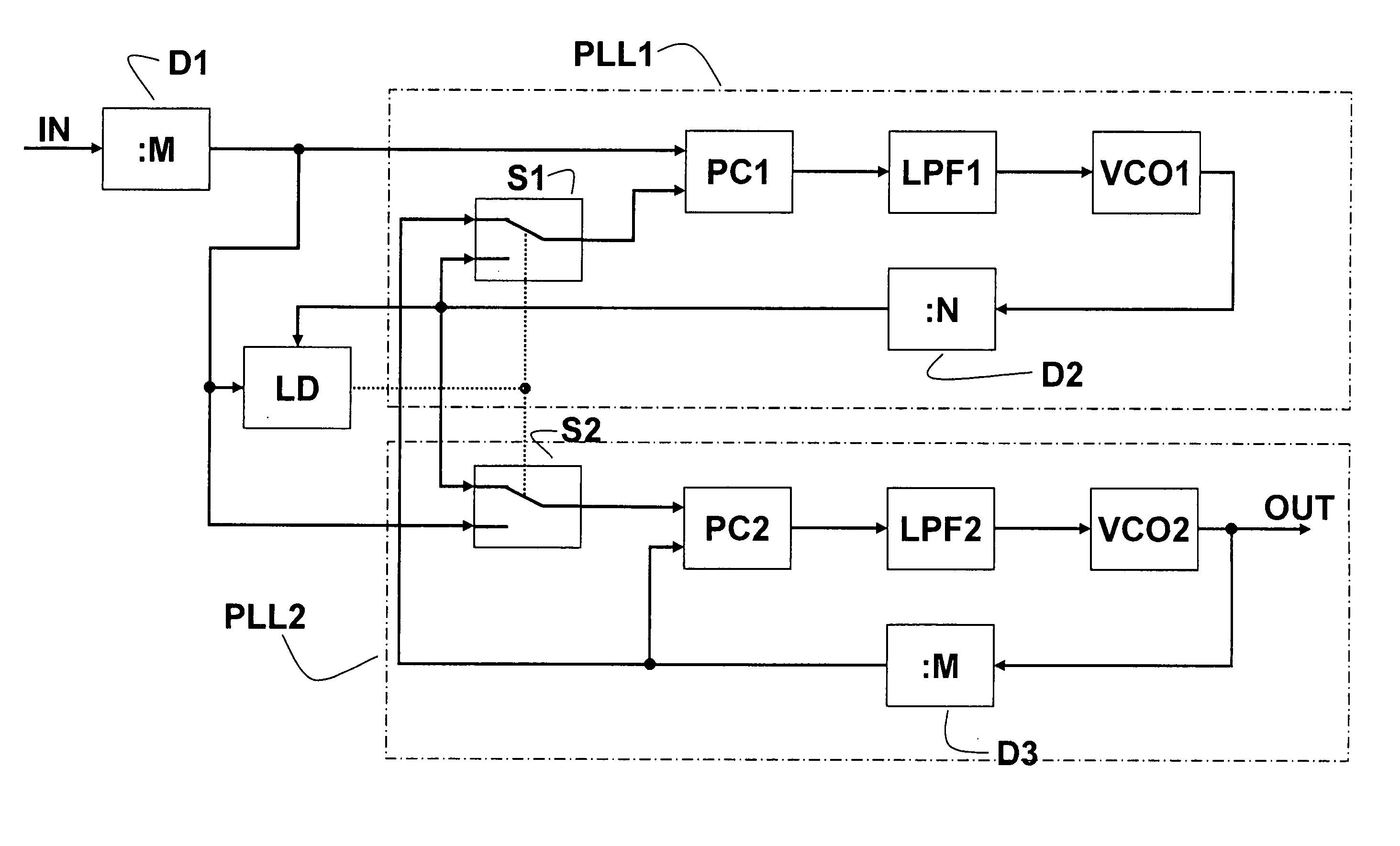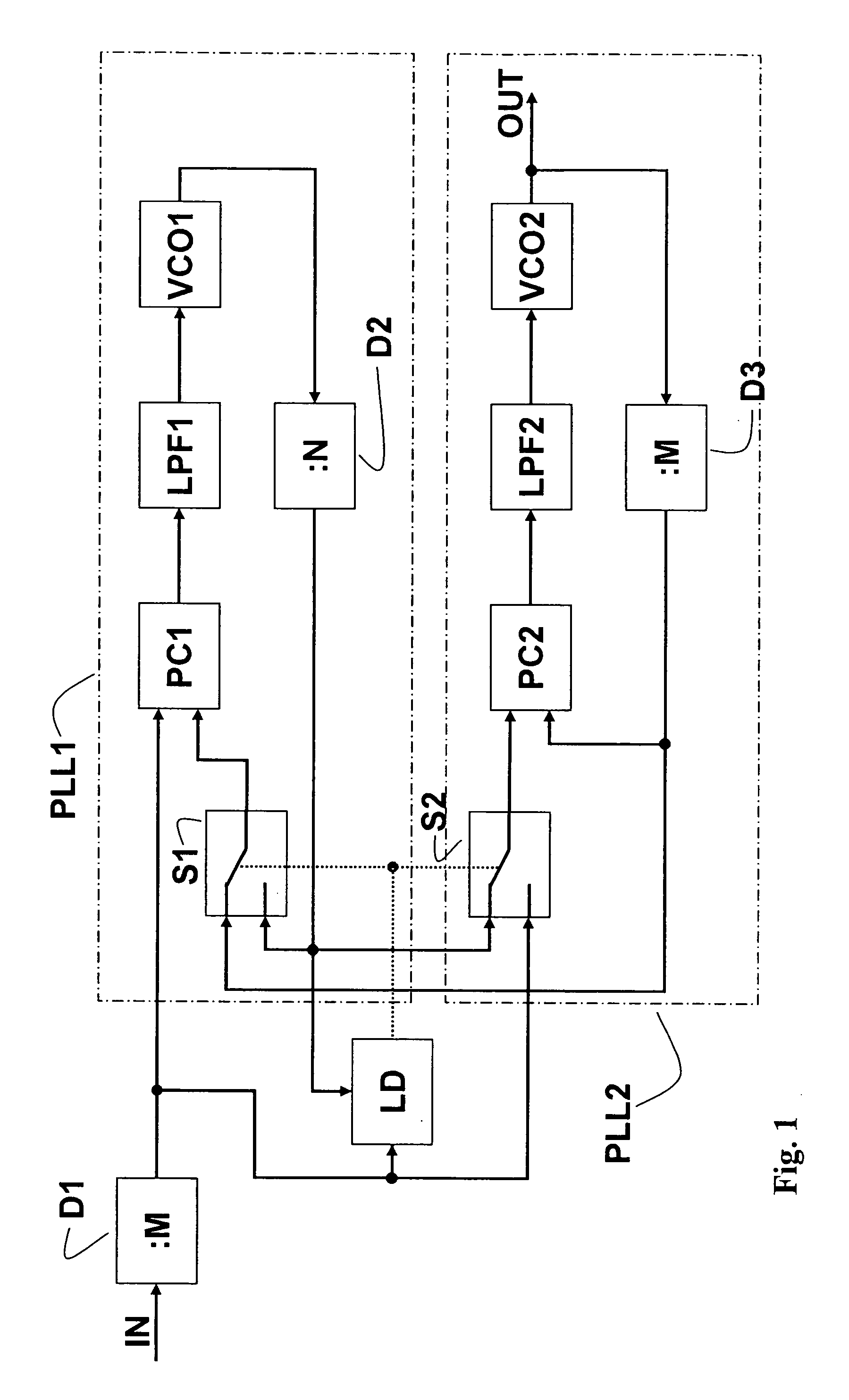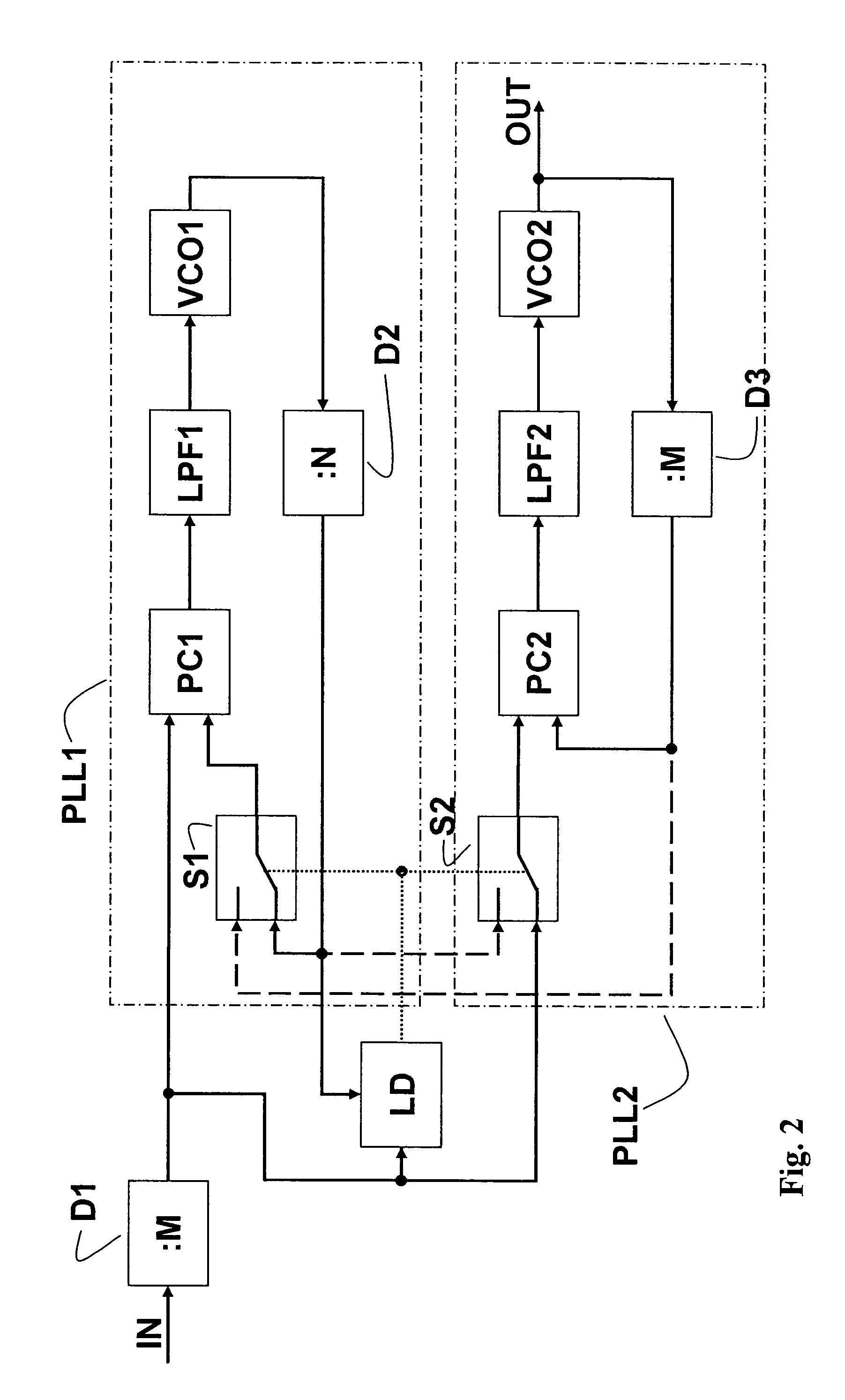Switchable PLL circuit
a technology of switching circuit and pll circuit, which is applied in the direction of electrical apparatus, pulse automatic control, etc., can solve the problems of less stable frequency and phase vcxos, and the output signal of a pll circuit using vcxos may have a higher amount of clock jitter, so as to achieve a large locking range, low jitter, and high jitter
- Summary
- Abstract
- Description
- Claims
- Application Information
AI Technical Summary
Benefits of technology
Problems solved by technology
Method used
Image
Examples
Embodiment Construction
[0013] In FIG. 1 a block diagram of the inventive circuit is shown. An input signal IN is supplied via a first divider D1 to a first input of a first phase comparator PC1 of a first PLL circuit PLL1. To a second input of the first phase comparator PC1 an output signal of a first controllable oscillator VCO1 is supplied via a second divider D2 and a first switch S1. The first controllable oscillator VCO1 is controlled by the output signal of the first phase comparator PC1 which is supplied to the first controllable oscillator VCO1 via a first filter LPF1. The output signal of the first controllable oscillator VCO1 is further supplied to a lock detector LD, which also receives the input signal IN after division in the first divider D1. The lock detector LD controls the first switch S1, which selectively applies the output signal of the first controllable oscillator VCO1 or the output signal of a second controllable oscillator VCO2 to the second input of the first phase comparator PC1....
PUM
 Login to View More
Login to View More Abstract
Description
Claims
Application Information
 Login to View More
Login to View More - R&D
- Intellectual Property
- Life Sciences
- Materials
- Tech Scout
- Unparalleled Data Quality
- Higher Quality Content
- 60% Fewer Hallucinations
Browse by: Latest US Patents, China's latest patents, Technical Efficacy Thesaurus, Application Domain, Technology Topic, Popular Technical Reports.
© 2025 PatSnap. All rights reserved.Legal|Privacy policy|Modern Slavery Act Transparency Statement|Sitemap|About US| Contact US: help@patsnap.com



